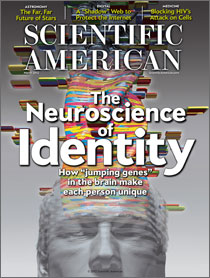Steve Jobs’s modus operandi of ignoring reality
is a double-edge sword
Robert Friedland was a long-haired, sandal-wearing, spiritual-seeking proprietor of an apple farm commune and student at Reed College when he met Steve Jobs in 1972 and taught the future Apple computer founder a principle called the “reality distortion field” (RDF). Macintosh software designer Bud Tribble recalled, “In his presence, reality is malleable. He can convince anyone of practically anything.” And yet the blade could cut two ways: “It was dangerous to get caught in Steve’s distortion field, but it was what led him to actually be able to change reality.” Another Mac software designer named Andy Hertzfeld said, “The reality distortion field was a confounding mélange of a charismatic rhetorical style, indomitable will, and eagerness to bend any fact to fit the purpose at hand.” The first Mac team manager Debi Coleman said Jobs “reminded me of Rasputin. He laser-beamed in on you and didn’t blink. It didn’t matter if he was serving purple Kool-Aid. You drank it.” And yet when the power was properly channeled, “You did the impossible, because you didn’t realize it was impossible.”
The RDF is an extreme version of what the psychologist Daniel Kahneman calls a “pervasive optimistic bias” in his 2011 book Thinking, Fast and Slow (Farrar, Straus and Giroux). “Most of us view the world as more benign than it really is, our own attributes as more favorable than they truly are, and the goals we adopt as more achievable than they are likely to be.” For example, only 35 percent of small businesses survive in the U.S., but when surveyed 81 percent of entrepreneurs assessed their odds of success at 70 percent, and 33 percent went so far as to put it at 100 percent! “One of the benefits of an optimistic temperament is that it encourages persistence in the face of obstacles,” Kahneman notes, while also citing study in which 47 percent of inventors “continued development efforts even after being told that their project was hopeless, and on average these persistent (or obstinate) individuals doubled their initial losses before giving up.” Failure may not be an option in the minds of entrepreneurs, but it is all too frequent in reality, which is why another bias called “loss aversion” is felt by most. Thus, Jobs’s success story is also an example of a selection bias whereby those who failed tend not to have biographies. (continue reading…)
Comments Off on The Reality Distortion Field
The willful distortion of reality to extremes
can be harmful
ARE YOU BETTER THAN AVERAGE AS A DRIVER? I know I am. I’ll bet 90 percent of you think you are, too, because this is the well-documented phenomenon known as the above-average effect, part of the psychology of optimism.
According to psychologist Daniel Kahneman, in his 2011 book Thinking, Fast and Slow, “people tend to be overly optimistic about their relative standing on any activity in which they do moderately well.” But optimism can slide dangerously into overoptimism. Research shows that chief financial officers, for example, “were grossly overconfident about their ability to forecast the market” when tested by Duke University professors who collected 11,600 CFO forecasts and matched them to market outcomes and found a correlation of less than zero! Such overconfidence can be costly. “The study of CFOs showed that those who were most confident and optimistic about the S&P index were also overconfident and optimistic about the prospects of their own firm, which went on to take more risk than others,” Kahneman notes.
Isn’t optimistic risk taking integral to building a successful business? Yes, to a point. “One of the benefits of an optimistic temperament is that it encourages persistence in the face of obstacles,” Kahneman explains. But “pervasive optimistic bias” can be detrimental: “Most of us view the world as more benign than it really is, our own attributes as more favorable than they truly are, and the goals we adopt as more achievable than they are likely to be.” For example, only 35 percent of small businesses survive in the U.S. When surveyed, however, 81 percent of entrepreneurs assessed their odds of success at 70 percent, and 33 percent of them went so far as to put their chances at 100 percent. So what? In a Canadian study Kahneman cites, 47 percent of inventors participating in the Inventor’s Assistance Program, in which they paid for objective evaluations of their invention on 37 criteria, “continued development efforts even after being told that their project was hopeless, and on average these persistent (or obstinate) individuals doubled their initial losses before giving up.” Failure may not be an option in the mind of an entrepreneur, but it is all too frequent in reality. High-risk-taking entrepreneurs override such loss aversion, a phenomenon most of us succumb to in which losses hurt twice as much as gains feel good that we developed in our evolutionary environment of scarcity and uncertainty. (continue reading…)
read or write comments (10)


